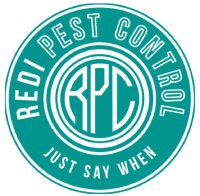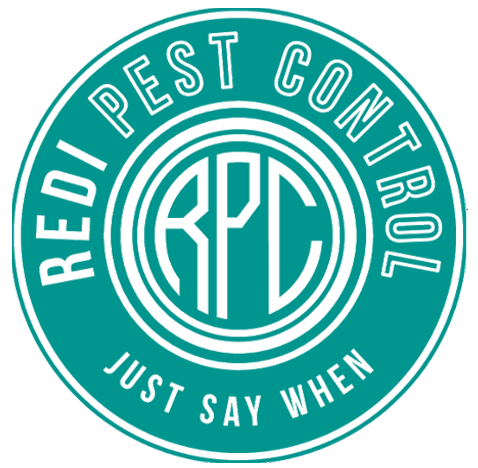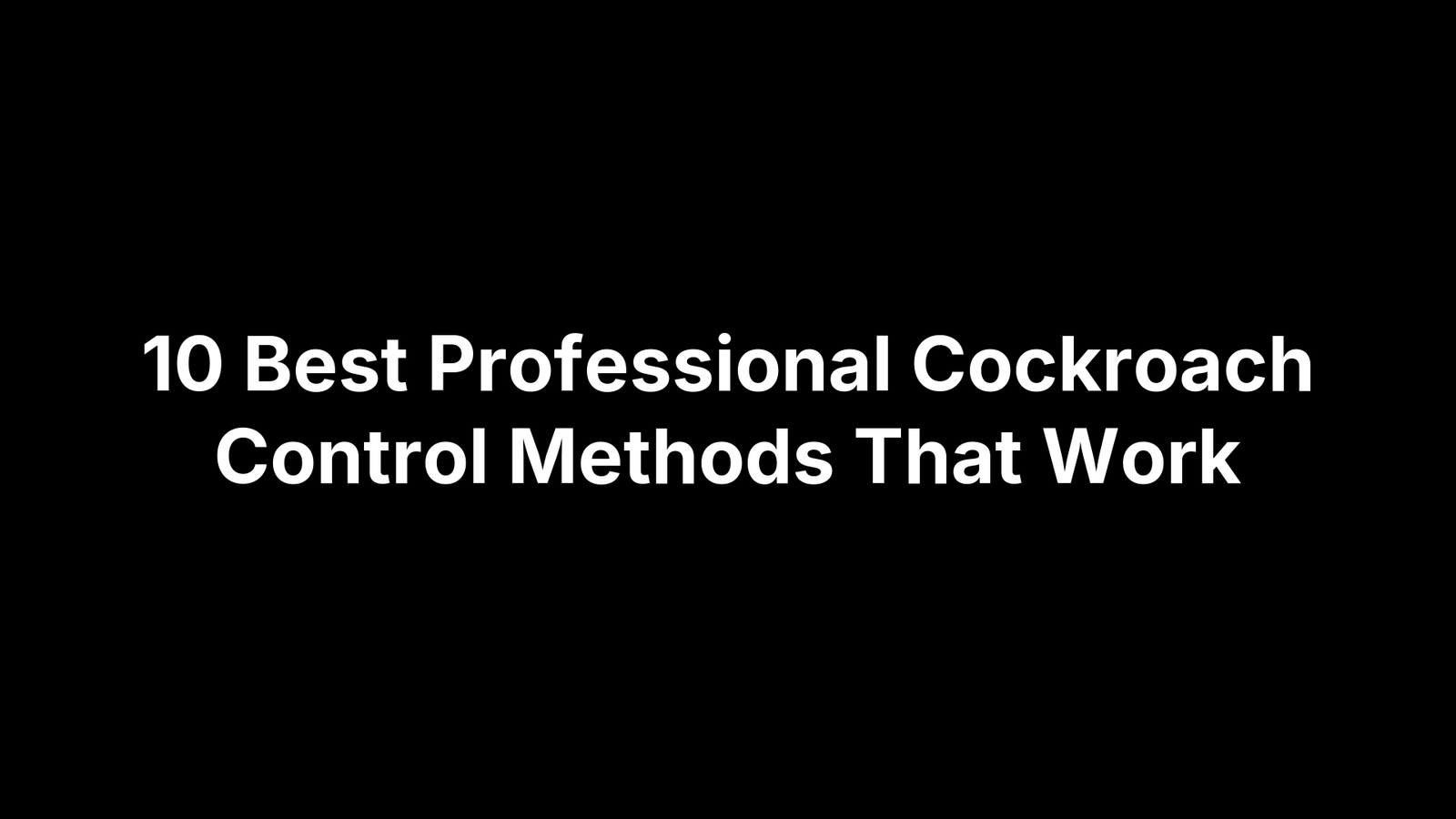The fastest, most reliable way to wipe out cockroaches is to pair professional-grade gel baits with non-repellent residual insecticides and schedule follow-up visits from a licensed exterminator. This trio attacks the colony at every life stage and keeps new invaders from moving in.
Store-bought sprays rarely manage that feat because roaches have grown resistant, nests stay hidden behind walls, and a single missed egg case restarts the invasion. That’s why the techniques professionals rely on—many restricted to trained technicians—remain the gold standard for offices, restaurants, and homes alike. In the pages below, we’ll start with what happens when you hire a full-service company such as Redi Pest Control LLC, then walk through nine additional tools the pros actually use, finishing with advice on choosing the right mix for your property. Use it as a checklist or blueprint; either way, you’ll know exactly how to evict every last roach.
1. Hire a Licensed Pest Control Service (Redi Pest Control LLC)
When the infestation is more than an occasional scuttle across the countertop, bringing in a licensed professional is the quickest path to relief. Companies like Redi Pest Control LLC bundle inspection, treatment, and monitoring into one seamless plan, using techniques and products that aren’t sold at the local hardware store.
How a Full-Service Extermination Works
A certified technician starts with a room-by-room inspection, looking for droppings, egg cases, moisture sources, and structural gaps. Every species is identified because German roaches demand different chemistry than American or Oriental varieties. From there, Redi’s integrated pest management (IPM) blueprint kicks in:
- Targeted application of gel baits, dusts, or non-repellent sprays exactly where activity is highest.
- Minimal chemical footprint—void injections and micro-crack treatments keep pesticides away from food prep surfaces.
- Follow-up visits at 14- and 30-day marks to refresh baits, pull monitors, and confirm eggs didn’t hatch out.
Specialized gear such as HEPA-filter vacuums, flushing aerosols, and wall-void injectors lets the crew hit harborages that homeowners simply can’t reach.
Key Advantages Over DIY
- Speed: Professional cockroach control products knock populations down in days, not weeks.
- Potency: Many active ingredients (e.g., indoxacarb concentrates) are restricted-use and unavailable to consumers.
- Correct placement: Pros know how grease, humidity, and food debris can ruin a bait line and adjust accordingly.
- Peace of mind: Re-treatment guarantees and discreet scheduling keep businesses compliant and households stress-free.
Costs & What to Ask Before Hiring
Expect $100–$400 for the initial visit, then $40–$75 per month for maintenance; severe German roach outbreaks or multi-family buildings push the upper end. Before signing, ask:
- Are your technicians state-licensed and insured?
- Which chemicals and IGRs will you apply, and are they pet-safe?
- How many follow-up visits are included, and is there a retreatment warranty?
Clear answers here separate true professionals from spray-and-pray operators.
2. Gel Bait Rotation Programs
After the initial knock-down, seasoned techs rely on gel baits to keep the pressure on. These syringe-delivered pastes mimic the fats and proteins roaches crave, yet carry a delayed-action poison that spreads through the colony by contact, grooming, and cannibalism. The catch? Roaches learn fast. That’s why a structured bait-rotation program is baked into every professional cockroach control plan that lasts more than a month.
What Gel Baits Are & Why Pros Rotate Them
Most gels use one of three active ingredients—indoxacarb, fipronil, or dinotefuran. Each kills by a slightly different metabolic pathway:
- Indoxacarb: converts to a more toxic form inside the roach
- Fipronil: blocks nerve impulses
- Dinotefuran: disrupts neurotransmitter receptors
Feeding on the same chemistry for weeks leads to bait aversion and behavioral resistance. Rotating formulas every 90 days (or sooner in heavy German roach pressure) keeps palatability high and resistance low.
Application Best Practices
Sanitation comes first; crumbs and grease equal competition. Once clean:
- Apply pea-sized dots every 10–12 inches along hinges, drawer tracks, and under refrigerators.
- Use micro-tips to reach cabinet corners and ceiling voids.
- Never smear—flat streaks dry out and lose potency.
- Record locations so fresh bait never overlaps dried product.
Products & Expected Results
Pros cycle between Advion, Maxforce FC Magnum, and Alpine Cockroach Gel. With good placement you’ll see:
- 70–90 % population drop within the first 7–10 days
- Near-eradication in 4–6 weeks when paired with IGRs and residual sprays
Over-applying is counterproductive; merging droplets create a crust the roaches ignore. Stick to measured dots, refresh on schedule, and the colony collapses on cue.
3. Insect Growth Regulators (IGRs) to Break the Life Cycle
Even the sharpest adulticide can’t fix a roach problem if fresh nymphs keep hatching behind the walls. That’s why every professional cockroach control program layers in an insect growth regulator—think of it as birth control for bugs. By sabotaging molting and reproduction, IGRs starve the infestation of new members so other treatments can finish the job.
How IGRs Work
IGRs mimic or block the juvenile hormones that tell an insect when to shed its skin and mature. Two stand-outs dominate the industry:
hydroprene(Gentrol) – triggers malformed molts so nymphs die before reaching adulthood.pyriproxyfen(NyGuard) – sterilizes females and prevents ootheca (egg case) development.
Because they target hormonal pathways unique to insects, IGRs pose extremely low risk to people and pets.
Where and When Pros Use Them
Technicians mix a small amount of concentrate into residual sprays, foggers, or mop water, then treat:
- Food-service kitchens where traditional insecticides are limited
- Wall voids, drop ceilings, and floor drains—prime nursery spots
- Multi-unit housing, where constant turnover makes reinfestation likely
One application keeps working 90–120 days, so every egg laid during that window is a dud.
Pros, Cons, Safety
Pros
- Breaks the life cycle; prevents “bounce-back” after adulticides fade
- Odorless and non-staining; safe for sensitive accounts like hospitals
Cons
- Slow; visible results take 2–3 weeks
- Must be combined with a faster knock-down product for immediate relief
Safety tips: wear gloves, avoid treating food-contact surfaces directly, and follow the labeled mix rate—more isn’t better. When used correctly, IGRs make sure the last roach you see is truly the last.
4. Non-Repellent Liquid Residual Sprays
Sometimes roaches need to be tricked, not chased. That’s the logic behind non-repellent residuals: the insects walk right through an invisible film, pick up a microscopic dose, and then spread it to nest-mates before anyone knows what hit them. Because there’s no telltale odor or “hot” surface, the colony doesn’t scatter to new hiding spots—a key advantage over old-school pyrethroid sprays that simply push the problem next door.
Chemistry Behind Non-Repellents
Most professional formulas rely on modern actives such as imidacloprid, thiamethoxam, and the slower-acting chlorfenapyr. Each molecule has a different mode of action, yet all share one trait: near-zero detectability to cockroaches. Once absorbed through the tarsal pads, the toxin either blocks neural receptors (imidacloprid, thiamethoxam) or disrupts cellular respiration (chlorfenapyr), leading to delayed mortality and efficient horizontal transfer within the harborage.
Application Techniques
Technicians apply a low-pressure fan spray 2–4 inches wide along baseboards, wall–floor junctions, plumbing penetrations, and behind appliances. The goal is a uniform “zone” roaches must cross—not puddles. Surfaces should stay dry for at least 24 hours; mopping too soon wipes away the barrier. For vertical voids, pros use pin-stream tips to coat inside cabinet seams without flooding woodwork. Because the product is undetectable, less is often more—overspray only wastes chemical and money.
When to Use & What It Costs
Non-repellent liquid barriers shine in dense German or American roach infestations, especially in apartment complexes where units share wall voids. Material costs run about $8–$12 to treat 1,000 sq ft; labor and follow-up bring the professional cockroach control invoice to roughly $150–$250 per treatment. Combine with gel baits or IGRs, and you’ve got a one-two punch that roaches never see coming.
5. Dust Insecticides for Wall Voids and Cabinets
Liquid sprays can’t defy gravity and gel baits dry out in hot voids—but dust insecticides keep killing for months in places you never see. Professionals blow a fine powder into electrical chases, toe-kick cavities, and upper cabinet corners, turning every hidden runway into a lethal sandbox that roaches track through and groom off later. Because the particles cling to the waxy cuticle and abrade it, the insects dehydrate even if they only pick up a few grains.
Why Dusts Reach Hidden Nests
Active ingredients such as silica gel, boric acid, and diatomaceous earth work mechanically, not chemically. That means no resistance issues and no detectable odor to warn the colony. Powders flow around pipes and wiring, coating the rough interior surfaces where German roaches stash oothecae. In areas where moisture would ruin gels—under dishwashers, behind bathroom tile—dusts stay potent and dry.
Professional Delivery Tools
Technicians load a bulb duster or powered wall-void machine with 4–6 oz of product, then insert a 12-inch puffer tip through pre-drilled holes or existing outlet boxes. A quick squeeze releases an even, electrostatic cloud 2–3 ft into the void. Painters’ tape or child-safe outlet covers are replaced afterward to keep curious pets out. Respirators, goggles, and drop cloths are non-negotiable; airborne dust can irritate lungs if mishandled.
Effectiveness & Limitations
A single application can remain active 6–12 months so long as it stays dry and undisturbed—ideal for long-term professional cockroach control. However, dusts are less effective in high-humidity zones and cannot be broadcast across open floors. Pair them with non-repellent sprays and bait rotation for whole-home coverage without gaps.
6. Roach Bait Stations and Monitors
A bait station is more than a plastic puck—it’s both a cafeteria and a census taker for roaches. Professionals deploy dozens at once, then let the insects do the leg-work: each forager drags a slow-acting poison back to the nest while the station’s consumption marks reveal how much traffic passed through. Glue monitors placed nearby collect carcasses, giving technicians a quick visual read on progress between service calls.
Dual Purpose: Kill and Track Activity
Commercial bait stations usually house hydramethylnon or abamectin gels that remain palatable for 60–90 days. Roaches feed, return to the harborage, and share the dose through regurgitation and cannibalism—extending the kill far beyond the device itself. At the same time, empty reservoirs, chewed entry ports, and count sheets on sticky traps provide objective data that guides the next round of professional cockroach control.
Strategic Placement Map
Pros follow a perimeter pattern that boxes roaches in:
- Behind refrigerator compressors and dishwashers
- Under sink cabinets and inside toe-kicks
- Along pantry shelves, one unit every 3–4 linear feet
- Beside stove lines and microwave stands
- At the junction of wall and ceiling in drop ceilings
Stations and monitors are rotated or replaced every 30–60 days to keep baits fresh and pheromone glue tacky.
Data-Driven Adjustments
When monitor pulls show high captures or bait depletion, technicians intensify efforts—adding gel dots, dusting voids, or widening non-repellent spray zones. Low counts may trigger a move to quarterly service, saving the client money while keeping the property roach-free.
7. Aerosol Flushing Agents and Crack-and-Crevice Injections
Even the smartest bait plan can miss roaches wedged deep behind switch plates or refrigerator insulation. That’s when pros reach for flushing aerosols – fast-acting pyrethrin sprays formulated to “irritate” insects out of hiding so follow-up treatments hit their mark. Used correctly, they turn a hidden infestation into an exposed target in minutes.
What Flushing Agents Do
Pyrethrin, often boosted with the synergist PBO, overstimulates roach nervous systems. Within seconds, pests leave harborages, crawl over treated surfaces, and either die on contact or carry a sub-lethal dose of non-repellent spray back to the nest. Because the cloud dissipates quickly, it leaves no residual odor that could repel future bait feeding.
Crack-and-Crevice Tips
- Shake the can vigorously.
- Insert the straw at a 45° angle into seams, hinge gaps, or wall void holes.
- Depress the nozzle for a one-second burst per linear foot, pulling the straw back as you spray for even coverage.
- Immediately follow with boric-acid dust or gel bait while roaches are still agitated and moving.
Use Cases & Precautions
Flushing is ideal for commercial kitchens after closing or before a large-scale residual application. Always extinguish pilot lights and disconnect electrical appliances—pyrethrin is flammable in aerosol form. Wear goggles, gloves, and an N95 mask to avoid inhalation. When integrated with other professional cockroach control methods, flushing agents clear the stage so slower baits and IGRs can finish the job without interference.
8. High-Heat Treatment for Severe or Resistant Infestations
When gel baits, dusts, and sprays still leave stragglers, professionals turn up the thermostat—literally. Whole-structure heat, sometimes called thermal remediation, is the nuclear option in the professional cockroach control toolkit. By raising the ambient temperature high enough and holding it there, every life stage—from egg to adult—desiccates and dies in a single workday. No chemical residue, no resistance, no lingering odor.
How Thermal Remediation Works
Technicians seal windows, doors, and HVAC vents, then roll in industrial heaters that force hot air through ducting. Wireless probes placed in the coldest zones (behind cabinets, inside wall voids, inside sofa cushions) relay real-time readings. The target is 140–150 °F (60–66 °C) sustained for 60–90 minutes; research shows the lethal threshold for German roach eggs is 122 °F held for 30 minutes, so the higher buffer guarantees kill even in insulated pockets.
Equipment and Monitoring
Most services use indirect-fired propane or high-amp electric heaters paired with high-CFM air movers to eliminate hot and cold spots. Technicians walk the space every 15 minutes, repositioning fans and adjusting thermostats until every probe confirms the kill zone. Thermal blankets drape delicate surfaces and door sweeps keep heat from escaping into hallways.
Pros, Cons, Cost
Pros
- Chemical-free—ideal for allergy-sensitive facilities
- One-day turnaround; tenants can often re-enter that evening
- Penetrates electronics, mattresses, and wall voids where sprays can’t reach
Cons
- Prep heavy: remove pets, wax items, cosmetics, certain electronics
- High energy draw may require generator trucks
- Pricey: typically $1–$2 per square foot, or $1,500–$3,000 for an average apartment
Because heat offers no residual barrier, reputable firms follow up with exclusion and a light non-repellent perimeter spray to stop reinvasion. Used strategically, thermal remediation is the “reset button” that lets other treatments start from a clean slate.
9. Sanitation and Exclusion Upgrades Performed by Pros
A spotless kitchen is just as lethal to roaches as any bait syringe. Grease films, bread crumbs, and soda splashes provide calories that let the pests ignore poison and pump out new egg cases. That’s why seasoned technicians treat cleaning and sealing as a core leg of professional cockroach control, not an afterthought tacked on at the end.
Why Cleaning Is a “Treatment”
Roach feces contain aggregation pheromones that lure more insects to the party. Pros vacuum droppings with HEPA units, power-wash dumpster pads, and degrease cook lines with alkaline foams that cut biofilm the way soap cuts oil. Remove the buffet, and every bait dot becomes the only entrée in town—feeding compliance skyrockets.
Exclusion Techniques
Once the crumbs are gone, the goal is to stop new invaders:
- Run a bead of silicone caulk around sink escutcheons and countertop seams
- Press copper mesh into gaps wider than ¼″ before foaming them shut
- Install door sweeps with no more than a nickel’s clearance
- Replace torn window screens and add weather-strip to garage roll-ups
These physical barriers force roaches to cross treated zones instead of wandering in unchallenged.
Professional-Grade Tools
Technicians wield commercial citrus degreasers, telescoping vacuum wands, laser-cut stainless steel door sweeps, and expanding polyurethane foam rated for fire blocks. The result is a kitchen or break room that starves stragglers and prevents costly re-infestations—turning chemical treatments from temporary fixes into permanent victories.
10. Scheduled Follow-Up Inspections and Long-Term Monitoring
Even the sharpest initial treatment is just the opening act; keeping a property roach-free means circling back on a set timetable. Licensed pros build re-inspection and monitoring into every professional cockroach control agreement so new hatchlings or incoming migrants never get a foothold.
Importance of Re-Inspection
German roach egg cases can take 20–60 days to hatch, long after sprays or gels seem to have worked. A follow-up at the two- and four-week marks lets technicians intercept these late arrivals, refresh baits that have dried out, and verify that sanitation steps are holding. Skipping this window is the single biggest reason “all clear” turns into “they’re back.”
What Happens During Follow-Up
- Pull glue monitors and record counts for trend analysis.
- Re-apply gel dots where consumption is high; remove stale droplets.
- Spot-treat valve boxes, wall voids, or conduit chases with dust if activity persists.
- Review cleaning logs with staff or homeowners and flag any new moisture or food sources.
- Update the service report so future techs know exact chemical loads and placements.
Choosing a Service Plan
Most homes do fine on a quarterly plan ($120–$180 per visit). Restaurants, daycares, or multi-unit complexes usually need monthly service ($60–$90) to meet health and lease requirements. Property managers often bundle multiple buildings under a master contract, cutting per-unit costs and guaranteeing priority scheduling when an emergency call comes in.
Next Steps to a Roach-Free Home
Piecing together a winning game plan is simpler than it looks: pair a protein-rich gel bait rotation with an undetectable residual spray, layer in an IGR, and keep the pressure on with good sanitation and scheduled follow-ups. That two-pronged approach—baiting for ingestion, spraying for contact—delivers the highest success rate the industry can offer and prevents the dreaded “rebound” two months later.
If you’ve read this far, you already know more than most DIY warriors. The final move is execution. Gather your monitoring data, choose at least two complementary methods from the list above, and commit to a 60-day timeline. Or, if you’d rather skip the chemistry lessons and guarantee results, schedule a professional inspection with Redi Pest Control LLC. We’ll tailor the perfect blend of treatments for your home or business and keep the roaches gone—for good.


